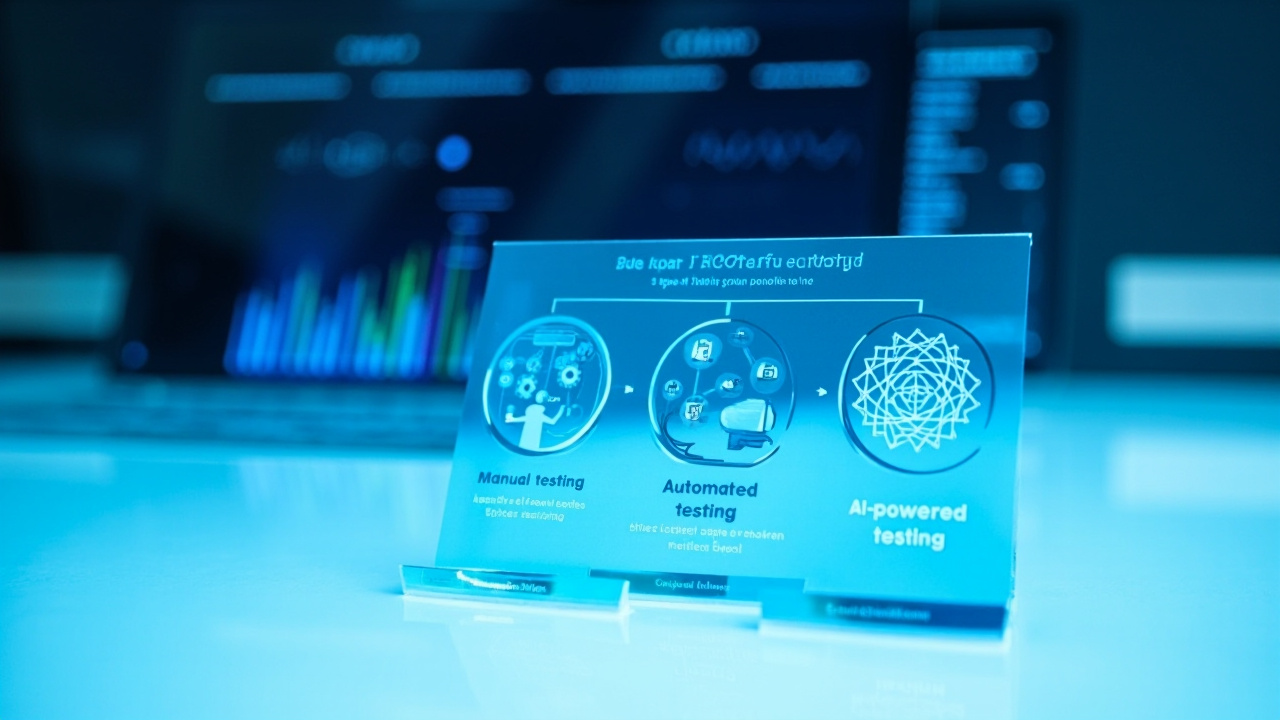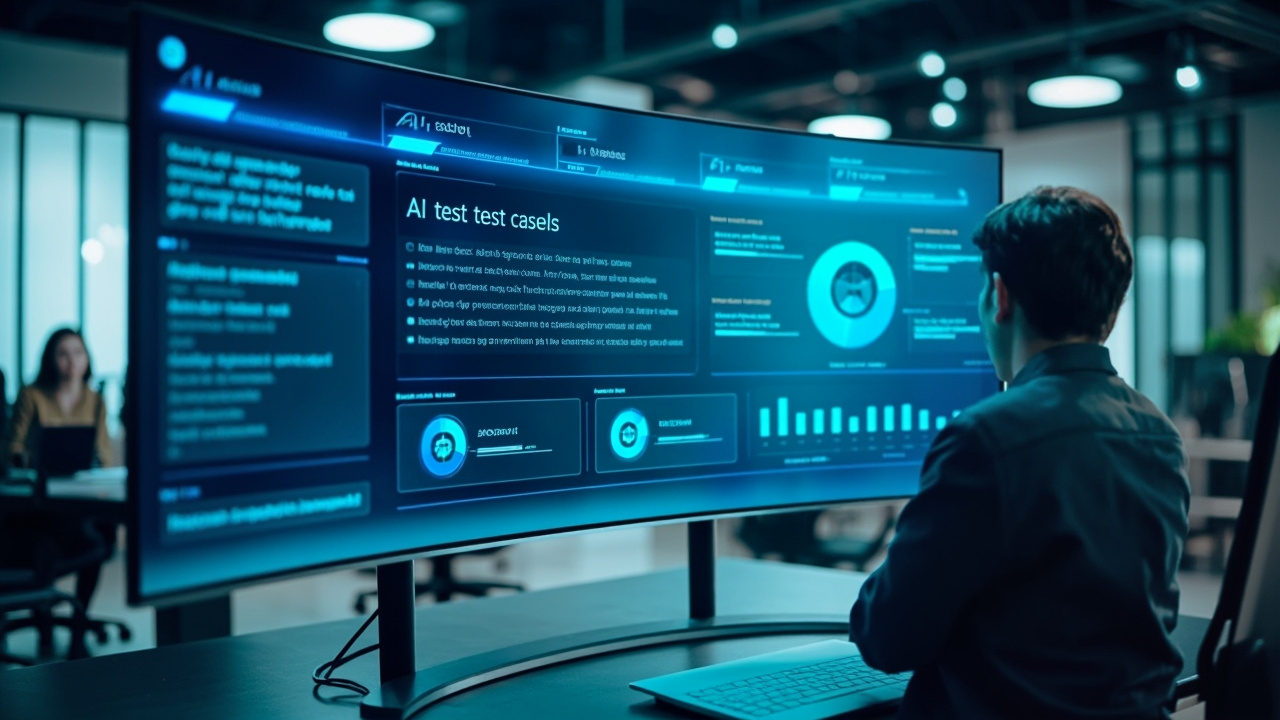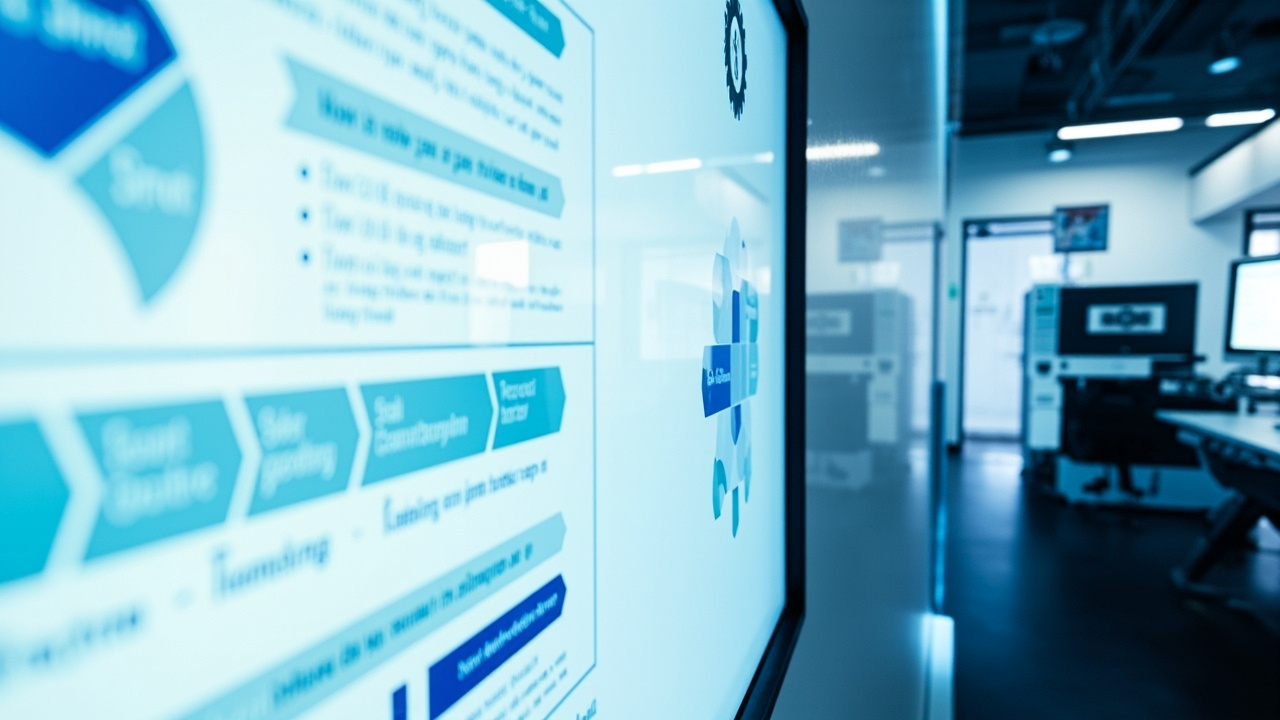In the rapidly evolving world of software development, ensuring the quality and reliability of applications is more crucial than ever. As businesses strive to deliver seamless user experiences and robust functionalities, the role of software testing becomes paramount. Yet, traditional testing methods often fall short in keeping pace with the accelerated development cycles and growing complexities of modern software systems. This is where innovation is not just welcome but necessary. Enter the era of AI-powered tools, like GenQE, that promise to revolutionize the way we approach software testing.
Today, we’ll explore the multifaceted world of software testing, examining its challenges, methodologies, and the potential of AI to enhance testing processes. Whether you’re a seasoned developer or a newcomer to the field, understanding these dynamics is essential for staying ahead in the competitive tech landscape.
The journey of software testing is a fascinating one, marked by continuous evolution. From manual testing to automated frameworks, each advancement has sought to address the limitations of its predecessor. However, as software systems grow in complexity, even automated testing faces challenges. The key lies in embracing intelligent solutions that can adapt and learn, ensuring comprehensive testing coverage and efficient defect detection.
Understanding the Software Testing Landscape

Software testing is a critical phase in the software development lifecycle, designed to validate the functionality, performance, and security of applications. But what exactly does it entail, and why is it essential?
The Basics of Software Testing
At its core, software testing involves executing a program or system to identify any gaps, errors, or missing requirements. This process is not merely about finding bugs; it s about ensuring the software meets the intended specifications and functions seamlessly under various conditions.
- Functional Testing: This type focuses on the functional aspects of the software, verifying that each feature works according to the requirements. It involves testing the user interface, APIs, databases, and security features to ensure they meet the documented specifications. Performance Testing: Here, the goal is to assess how the software performs under specific conditions, including load and stress testing. Performance testing is crucial for understanding the scalability of the application and ensuring it can handle peak user loads without degrading performance. Security Testing: With cyber threats on the rise, ensuring that applications are secure from vulnerabilities is paramount. Security testing involves evaluating the software for vulnerabilities, risks, and threats to ensure that data remains secure from potential breaches.
The Importance of Robust Testing
In today s competitive market, delivering a flawless product is non-negotiable. Poor software quality can lead to customer dissatisfaction, financial loss, and damage to brand reputation. Effective testing ensures that these risks are minimized, providing confidence in the software s reliability and performance.
“Quality assurance is not an act, it s a habit.” Aristotle
Moreover, testing plays a crucial role in complying with industry standards and regulations, particularly in sectors like finance and healthcare, where software reliability is critical. Firms that neglect these standards risk significant penalties and damage to their reputations.
Transitioning to Modern Testing Practices
As the demands on software grow, so too must the methods we use to test it. This has led to the adoption of more sophisticated testing approaches, incorporating automation and AI technologies. These advancements aim to improve testing efficiency, accuracy, and coverage, paving the way for faster release cycles without compromising quality.
The Challenges of Traditional Testing Methods

While traditional testing methods have served us well, they are not without their limitations. Understanding these challenges is essential for appreciating why modern solutions are necessary.
Limitations of Manual Testing
Manual testing, despite being thorough, is time-consuming and prone to human error. As software projects increase in complexity, manual testing becomes increasingly impractical.
- Time-Consuming: Manual tests require significant time investment, often slowing down the development process. Each test case must be executed manually, which is not feasible for large-scale applications with complex functionalities. Scalability Issues: Scaling manual tests to accommodate larger projects or frequent releases can be challenging. As applications grow, the number of test cases can become overwhelming, leading to delays in testing and release cycles. Inconsistency: Human testers may inadvertently introduce inconsistencies in test execution. Variability in test results can arise from different testers interpreting requirements differently or missing steps in the test procedure.
Automated Testing: A Step in the Right Direction
Automated testing addresses some of these issues, offering faster and more consistent test execution. However, it is not a silver bullet. Automated tests require a significant upfront investment in setting up and maintaining test scripts.
- Maintenance Overhead: Automated tests can break with changes in the application’s UI or logic, requiring continuous updates. This maintenance can become a substantial overhead, particularly when dealing with frequently changing applications. Limited Adaptability: Traditional automation tools can struggle with complex testing scenarios that require dynamic adaptability. These tools often rely on predefined scripts, which can limit their ability to adapt to unexpected changes in the application environment.
The Need for Intelligent Testing Solutions
To overcome these challenges, there is a growing need for tools that combine automation with intelligence. This is where AI-powered solutions like GenQE come into play, offering adaptive testing capabilities that traditional methods lack.
“The greatest enemy of knowledge is not ignorance, it is the illusion of knowledge.” Stephen Hawking
By leveraging AI, these tools can automatically generate and execute test cases, prioritize tests based on risk, and adapt to changes in the application, significantly reducing the manual effort required.
The Rise of AI in Software Testing

Artificial Intelligence (AI) is transforming industries across the globe, and software testing is no exception. By harnessing the power of AI, organizations can enhance their testing processes, making them more efficient and effective.
AI’s Role in Test Automation
AI brings a new dimension to test automation by enabling intelligent test generation and execution. This allows for more comprehensive testing with less manual intervention.
- AI-Driven Test Generation: Tools like GenQE can analyze software requirements and historical data to automatically generate test cases, ensuring better coverage and efficiency. AI algorithms can scan code bases to identify potential areas of risk and automatically create test cases that address these vulnerabilities. Smart Test Execution: AI can prioritize and execute test cases based on risk analysis, focusing on the most critical areas first. This ensures that testing efforts are concentrated on high-impact areas, optimizing the use of limited testing resources.
Enhancing Test Accuracy with Machine Learning
Machine learning algorithms can analyze vast amounts of test data to identify patterns and anomalies, improving defect detection rates.
- Anomaly Detection: AI can spot subtle patterns and anomalies that human testers might overlook, catching potential issues early in the development cycle. Machine learning models can be trained to recognize normal behavior and flag deviations that could indicate defects. Predictive Analytics: By predicting potential problem areas, AI helps teams focus their testing efforts more effectively. Predictive analytics can guide testers in identifying where defects are most likely to occur, allowing for proactive testing strategies.
The Benefits of AI-Driven Testing
The integration of AI in testing processes offers numerous benefits, including reduced time to market, higher accuracy, and cost savings.
“AI is not just another tool; it’s a whole new way of thinking about problem-solving.” Unknown
AI-driven testing not only accelerates release cycles but also enhances the overall quality of the software, allowing developers to focus more on innovation and less on repetitive tasks. This shift in focus can lead to more creative solutions and a better overall user experience.
GenQE: A Case Study in AI-Powered Efficiency

GenQE stands out as a pioneering platform in the realm of AI-powered software testing. Its innovative features address the very challenges that traditional methods struggle with, offering a glimpse into the future of testing.
Leveraging AI for Smarter Testing
At the heart of GenQE is its ability to leverage AI for smarter, more adaptive testing processes. This results in substantial efficiency gains and higher accuracy.
- Self-Healing Automation: GenQE s self-healing capabilities automatically adjust test scripts when UI elements change, reducing maintenance efforts and ensuring continuity in testing. This feature minimizes the downtime associated with broken test scripts and allows for more efficient test execution. Comprehensive Test Coverage: The platform supports extensive test coverage across web, mobile, APIs, and cloud environments, ensuring applications perform well across different platforms. This adaptability is crucial for organizations that need to deliver consistent experiences across a diverse range of devices and operating systems.
Seamless Integration for Continuous Testing
GenQE integrates seamlessly with popular CI/CD tools like Jenkins and GitHub Actions, allowing for continuous testing as part of the development pipeline.
- DevOps & CI/CD Integration: This integration ensures that testing keeps pace with development, facilitating faster, more reliable release cycles. As changes are committed to the codebase, automated tests can be triggered, providing instant feedback to developers. Advanced Analytics & Reporting: GenQE provides detailed insights into software quality trends, enabling teams to make informed decisions. The platform s analytics capabilities offer valuable metrics on test coverage, defect density, and cycle time, helping teams identify areas for improvement.
The Impact of GenQE on Software Quality
By incorporating GenQE into their testing processes, organizations can achieve faster time to market and reduced costs, without compromising on quality.
“Innovation distinguishes between a leader and a follower.” Steve Jobs
GenQE exemplifies how AI can be harnessed to transform software testing, making it not just faster but smarter and more reliable. Organizations that adopt such tools position themselves at the forefront of technological advancement, setting new standards for quality assurance.
Practical Applications of AI in Testing

Understanding the theoretical benefits of AI in software testing is one thing, but seeing its practical applications can offer deeper insights into its transformative potential.
Real-World Use Cases
AI-powered testing solutions are being employed across various industries, each benefiting from enhanced testing capabilities.
- E-commerce Platforms: AI-driven testing ensures that complex e-commerce systems function seamlessly, even during peak traffic periods. By simulating user behavior, AI can test how an e-commerce platform handles high volumes of transactions, ensuring a smooth user experience under pressure. Healthcare Applications: In healthcare, where accuracy is critical, AI helps identify potential issues that could impact patient safety. AI-driven testing can simulate various patient scenarios, ensuring that healthcare applications provide accurate and reliable results. Financial Services: AI enhances the security and reliability of financial applications, crucial for compliance and customer trust. By continuously monitoring for anomalies and potential threats, AI helps financial institutions maintain secure and compliant applications.
Case Studies Highlighting Success
Several organizations have successfully implemented AI-driven testing, reaping significant benefits in terms of efficiency and quality.
- Case Study 1: A leading e-commerce company reduced their testing cycle by 40% using AI-driven test automation, significantly speeding up time to market. This reduction in cycle time allowed the company to release new features more frequently, enhancing customer satisfaction and competitive advantage. Case Study 2: A healthcare provider improved their application s reliability by integrating AI-powered defect detection, catching issues that traditional methods missed. This proactive approach resulted in fewer defects reaching production, improving the overall safety and effectiveness of the application.
Actionable Insights for Implementation
For organizations looking to adopt AI in their testing processes, focusing on key areas such as integration, training, and process adaptation is crucial.
- Integration with Existing Systems: Ensure seamless integration with current tools and workflows to maximize the benefits of AI. This may involve customizing AI tools to fit the unique needs of the organization. Training and Skill Development: Equip teams with the necessary skills to leverage AI technologies effectively. Ongoing training and support are essential to ensure that teams can fully capitalize on the capabilities of AI-driven testing. Continuous Improvement: Regularly evaluate and refine AI-driven testing processes to adapt to evolving software requirements. By maintaining a culture of continuous improvement, organizations can ensure that their testing processes remain effective and relevant.
The Future of Software Testing: Looking Ahead

As we look to the future, the potential of AI in software testing is vast and exciting. The journey towards fully autonomous testing is already underway, with AI as the driving force.
Trends Shaping the Future
Several trends are shaping the future of software testing, with AI at the forefront of this transformation.
- Increased Automation and Autonomy: AI will continue to drive more autonomous testing processes, reducing human intervention further. As AI technologies mature, we can expect to see more sophisticated autonomous testing systems that require minimal human oversight. Greater Emphasis on Security: As threats evolve, AI will play a crucial role in enhancing security testing, ensuring applications remain robust against vulnerabilities. AI-driven security testing can provide real-time threat detection and response, protecting applications from emerging threats. Enhanced Collaboration and Integration: AI will facilitate better collaboration between development and testing teams, integrating more seamlessly with DevOps practices. By breaking down silos and fostering a culture of collaboration, organizations can improve the efficiency and effectiveness of their testing efforts.
Preparing for the New Era of Testing
Organizations must prepare for this new era by investing in AI technologies and fostering a culture of innovation and adaptability.
“The only way to discover the limits of the possible is to go beyond them into the impossible.” Arthur C. Clarke
Embracing AI in testing not only improves software quality but also positions organizations at the cutting edge of technology. Those who invest in AI-driven testing solutions will be better equipped to navigate the challenges of an increasingly complex software landscape.
Conclusion: Embracing Change for Better Outcomes
As software systems become more complex, the need for intelligent testing solutions becomes ever more pressing. By embracing AI-powered tools like GenQE, organizations can not only keep pace with the demands of modern software development but also set new standards for quality and efficiency.
For those ready to take the leap, exploring AI-driven testing solutions could be the key to unlocking new levels of innovation and success.
In conclusion, the integration of AI in software testing is not just a trend but a necessity for those looking to stay competitive in the ever-evolving tech landscape. By exploring and adopting cutting-edge tools like GenQE, organizations can ensure they are not just keeping up with the pace but leading the way in software quality and innovation.
Discover More Innovative Solutions
Want to learn more about the tools and technologies discussed in this article? Explore how these innovations can be tailored to your specific needs and workflow requirements.
Our team of experts is available to answer your questions and provide personalized insights into how modern solutions like GenQE can address your specific challenges.
If the link above does not work, please visit: https://calendly.com/dm-csimplifyit/30min?month=2025-05